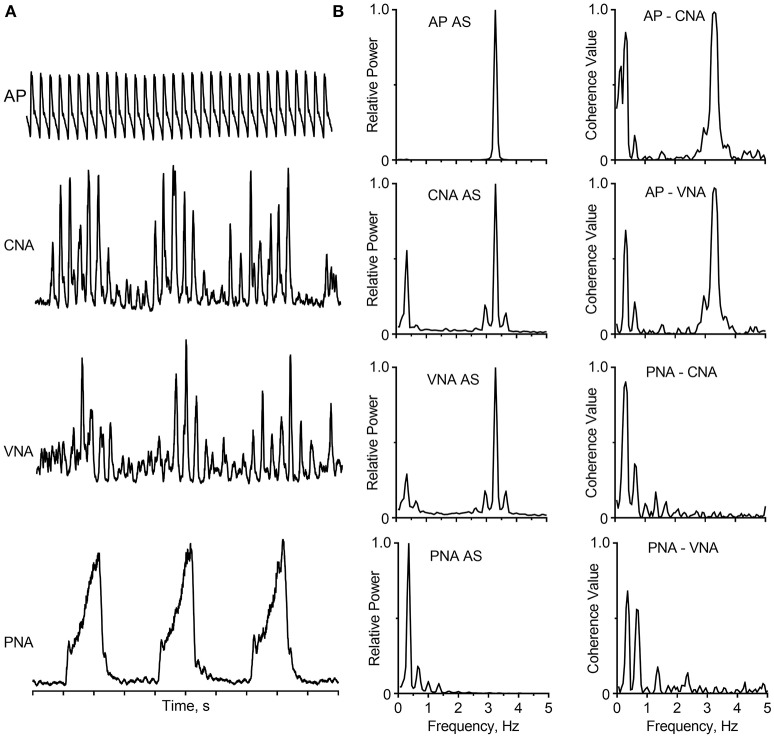Figure 1.
Cardiac-related and respiratory activity recorded from two branches of the left stellate ganglion in a barbiturate-anesthetized, paralyzed, and artificially-ventilated cat. (A) Traces (top to bottom) show the arterial pressure (AP), cardiac nerve activity (CNA), vertebral nerve activity (VNA), integrated phrenic nerve activity (PNA), and time base (1 s/division). The capacity-coupled preamplifier bandpass setting was 30–3,000 Hz (CNA, VNA) or 10–1,000 Hz (PNA). Signals were passed through a 50/60 Hz noise eliminator (Hum Bug; Quest Scientific) and a moving averager (CWE, Model MA-821RSP) with a 50-ms (CNA, VNA) or 100-ms (PNA) time constant. (B) Autospectra (left) and coherence functions (right) for these signals. Spectra are based on 35 20-s windows with 50% overlap, and they have a frequency resolution of 0.05 Hz per bin. Data showing cardiac- and respiratory-related rhythms appear in CNA and VNA have been published (Barman and Kenney, 2007; Barman, 2016); this figure has been created de novo but does not contain any original data.

